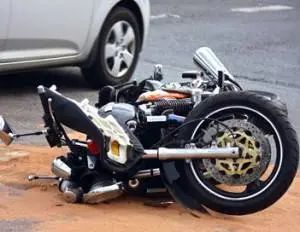Frequently Asked Questions
What are the rules for electric bikes in California?+
According to California law, electric bicycles are essentially treated the same as conventional bicycles, with the same vehicle and traffic laws applying to both. However, California statute CA State AB1096 creates three distinct eBike classifications, which are then used to determine specific eBike regulations. These classifications are as follows: - Class 1 Electric Bicycles: Class 1 eBikes are low-speed, pedal-assisted bicycles equipped with motors that assist only when the rider is pedaling. When the electric bike reaches a speed of 20 mph, the motor ceases to assist. In California, an individual may operate a Class 1 electric bicycle on any paved surface where a conventional bike is permitted.
- Class 2 Electric Bicycles: Class 2 eBikes are low-speed, pedal-assisted bicycles equipped with motors that exclusively propel the bicycle but do not assist when the electric bike has reached a speed of 20 mph. In California, an individual may operate a Class 2 electric bicycle on any paved surface where a conventional bike is permitted.
- Class 3 Electric Bicycles: Class 3 eBikes, known as speed pedal-assisted eBikes, are equipped with motors that assist only while the rider is pedaling. The motor on Class 3 electric bicycles ceases to assist once the bike has reached a speed of 28 mph. Anyone operating a Class 3 electric bicycle in California must be 16 years of age or older and must always wear a helmet while operating the bike. Class 3 electric bicycles are prohibited on Class I multi-use bike paths unless local law has specifically authorized their use.
Are eBikes safer than regular bikes?+
There is less data available concerning eBike accidents and injuries than conventional bicycles. However, the existing data shows that electric bicycle riders are more likely to suffer a severe injury following an accident than conventional bicycle riders. The main reason for this is that an electric bicycle can travel at a far greater rate of speed than a conventional bike, reaching up to 28 mph in some instances. When you combine the higher speeds of an eBike with the ability for faster acceleration, riders, particularly those who are new to operating an eBike, could more easily lose control of their bicycle. In addition, an electric bicycle weighs more than a conventional bike, thanks to the motor. That means they have a longer stopping distance and are more prone to roll-over accidents. Ebikes are also more prone to accidents that result from defects and malfunctions. These can include controller malfunction, throttle stickiness, bearing lock-ups, front-wheel failure, motor issues, and battery issues. Electric bikes have been known to catch fire due to battery malfunctions while driving or charging. While safety is a concern that should always be taken seriously, using an electric bicycle is just as safe as using a traditional bike if the operator follows the rules of the road, takes proper care of the eBike, and takes all necessary safety precautions.
What are the pros and cons of electric bikes?+
Pros of an electric bike include: - eBikes are easy to use
- eBikes can be used even if the battery dies
- some eBikes can go up to 70 miles on a single charge
- eBikes can assist when going up hills
- eBikes are clean and environmentally friendly
Cons of an electric bike include: - eBikes are more expensive than conventional bikes
- eBikes are heavier than traditional bikes
- eBikes accidents have the potential to cause more significant injury to the operator
- eBikes are more sought after and, therefore, more likely to be stolen
Can electric bikes cause fires?+
Although rare, electric bikes have been known to catch fire. That is because eBikes are powered by lithium-ion batteries. Lithium-ion batteries can overheat, catch fire, and explode. Lithium-ion batteries store a lot of energy and may pose a significant threat if they are not appropriately handled. Like any product, some batteries are defective, so there is still a risk of fire even when all safety precautions are taken.
How do you put out a lithium battery fire?+
Lithium-ion battery fires are extinguished using either a standard foam fire extinguisher, sodium carbonate, powder graphite, CO2, copper powder, or ABC dry chemical. When extinguishing the fire is not feasible, allow it to burn out on its own. You can control the fire by using water to douse the immediate area surrounding the eBike. That will help to prevent fire spread.
Should I charge my eBike battery after every ride?+
Most eBike manufacturers recommend that you charge your eBike battery following each ride. That ensures that your electric bicycle is always ready for your next ride.
Are electric bikes safe for seniors?+
Yes, electric bikes are safe for seniors, and they also offer an array of great health benefits because they are a great way to experience low-impact physical exercise. While traditional cycling has a reputation for being physically challenging, particularly for those with aging bodies, eBikes have made it much easier for seniors to enjoy the pleasures of cycling.




